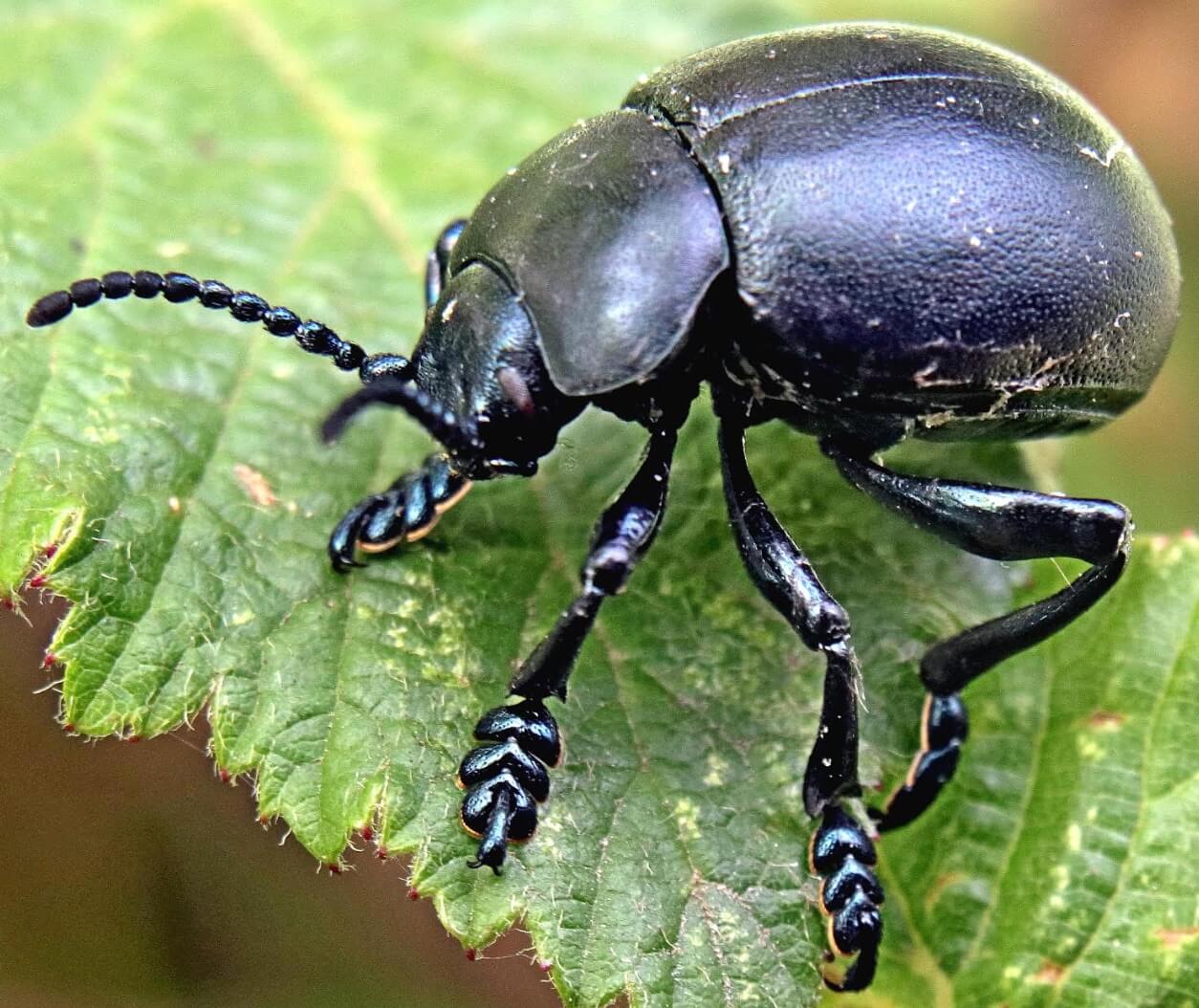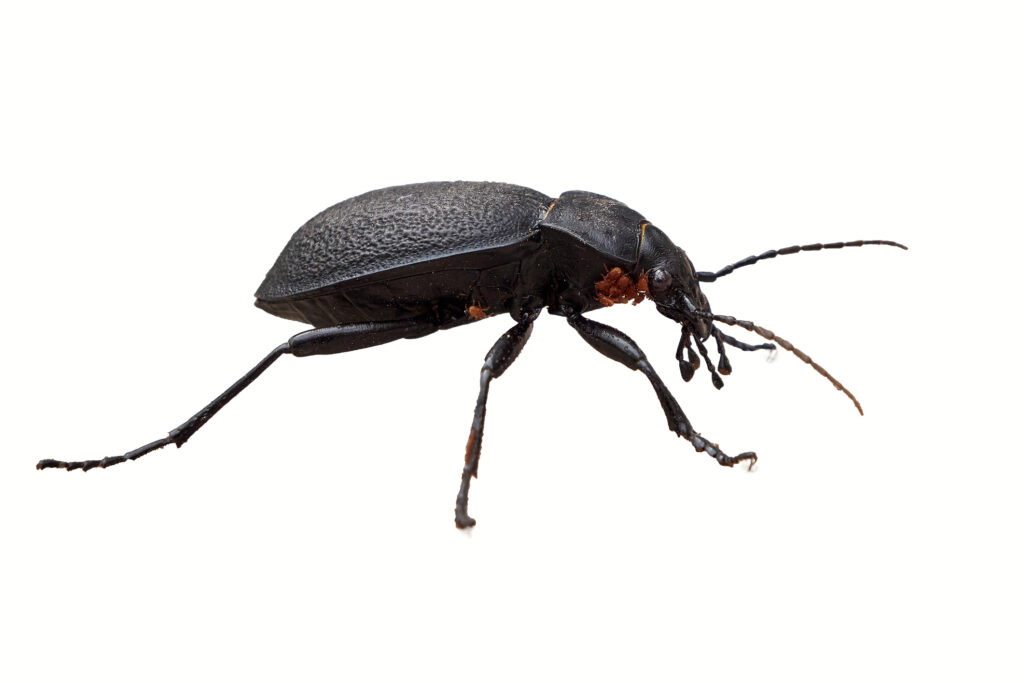Black beetles are a common type of insect that can be found in homes and backyards around the world There are many different species of black beetles, each with their own unique behaviors and characteristics In this article, we will explore some of the most common black beetles, how to identify them, and whether they pose any risks.
What are Black Beetles?
Beetles belong to the insect order Coleoptera, which translates to “sheathed wing” in Greek There are over 400,000 known species of beetles worldwide, making them one of the largest groups in the animal kingdom
Beetles have a hard exoskeleton shell that covers and protects their wings and abdomen. This is called the elytra. Their bodies tend to be oval or cylindrical in shape. They have six legs, two antennae, and chewing mouthparts.
While beetles come in a rainbow of colors, many species are black. The black coloration serves as camouflage and protects them from predators.
Why are They Black?
There are a few reasons why many beetle species are black in color:
-
Camouflage – A black body helps beetles blend into their environments, whether living in soil, under rocks, within trees, or in other dark places. This helps conceal them from potential predators.
-
Heat absorption – The dark coloration of black beetles allows them to absorb heat more efficiently. This helps them stay warm in colder environments.
-
Protection – The black exoskeleton contains more concentrated pigments than lighter colors. This makes it harder and more durable, offering better protection.
-
Warning coloration – Some black beetles contain toxins or emit foul odors. Their dark color warns potential predators to stay away.
Common Household Black Beetles
Let’s look at some of the most common black beetle species that you may encounter in and around your home:
Black Carpet Beetles
Black carpet beetles (Attagenus unicolor) are indoor pests belonging to the family Dermestidae. As their name suggests, the larvae feed on materials found in carpeting and upholstery, including wool, silk, leather, fur, and feathers. This can cause considerable damage over time.
The adult beetles are oval, measuring just 1-3mm long, and are a shiny black color. They are covered with tiny hairs and have clubbed antennae. The larvae are fuzzy and brown, resembling caterpillars.
Furniture Beetles
Furniture beetles (Anobium punctatum), also called wood boring beetles, attack wooden furniture, floors, and structural timbers. The larvae bore into the wood, weakening structures and ruining the attractive appearance of furniture. These beetles are 0.1-0.18 inches long, with elongated brown or black bodies.
Larder Beetles
Larder beetles (Dermestes lardarius) are a household pest that feeds on stored dry foods like flour, cereals, spices, nuts, and pet food. They are a cream to black color with a yellowish band across the wings and three dots on each side. They grow to around 1/3 inch long.
Drugstore Beetles
Drugstore beetles (Stegobium paniceum) get their name because they were commonly found infesting pharmacies, feeding on medicinal powders, pills, and herbs. These tiny cylindrical beetles are just 2-3.5mm long and reddish-brown in color with faint yellow hairs. They feed on a wide range of foods.
Backyard and Garden Black Beetles
There are also many black beetles that live outdoors and may wander into your yard or garden:
June Bugs
June bugs (Phyllophaga spp.) are chunky, oval beetles that are blackish or reddish-brown in color. They are seen in early summer around lights at night, making a loud buzzing noise. Larvae live underground for years before emerging as adults to mate.
Japanese Beetles
Japanese beetles (Popillia japonica) are an invasive pest in North America. They attack over 300 plant species including roses, grapes, hops, and fruit trees. The adults have an iridescent green head and coppery wings with white dots.
Blister Beetles
Blister beetles (Meloidae family) have narrow, elongated bodies that may be black, gray, brown, or orange. When threatened, they emit a toxic chemical that can cause blistering of the skin. This serves as a defense mechanism against predators.
Darkling Beetles
Darkling beetles (Tenebrionidae family) inhabit sandy soils, especially in dry desert-like environments. Many species are completely matte black with no markings. They gather under rocks during the day to avoid heat and dryness.
Are Black Beetles Harmful?
Most black beetles are harmless to humans, although some can inflict painful bites with their strong mandibles.
Certain species are considered agricultural or household pests that damage crops, structures, and food products. Examples are Japanese beetles, carrion beetles, and carpet beetles.
Some black beetles contain toxic chemicals or emit foul odors as defensive mechanisms. Blister beetles can produce skin lesions and some darkling beetles release nasty smelling secretions.
A few longhorn beetles have larvae that bore into wood, which can weaken or damage the timber. Furniture and powderpost beetles are examples.
So while most black beetles are not aggressive and pose little threat, their feeding and breeding habits can occasionally cause problems for humans. Checking for an infestation of grain weevils or carpet beetle larvae early helps minimize damage.
Key Takeaways:
-
There are over 400,000 species of beetles, many of which are black in color.
-
Black coloration provides camouflage and heat absorption advantages for beetles living in dark environments.
-
Common household black beetles include carpet beetles, furniture beetles, larder beetles, and drugstore beetles.
-
Backyard black beetles you may see include June bugs, Japanese beetles, blister beetles, and darkling beetles.
-
Most black beetles are harmless to humans, but some can inflict bites, emit odors, or damage crops, timber, and fabrics.
-
Checking for early signs of infestation can help minimize damage from pest beetle species.
Black beetles are fascinating insects that come in many shapes and sizes. Learning how to identify the most common household and garden species can help you take steps to protect your home, pantry, and yard from damage. With vigilance, black beetles and humans can peacefully coexist.

What Do Black Beetles Look Like?
- Hard, shiny exoskeleton that appears black or very dark brown
- Ridged wing covers (elytra) with visible grooves or lines
- Six legs with visible segments
- Oval or elongated body shape
- Nocturnal habits, most active at night
- Found primarily in dark, damp areas around the home’s exterior
Black carpet beetles are often confused with ground beetles but are typically smaller (1/8 to 1/4 inch) and have a more rounded appearance. Unlike ground beetles, carpet beetles pose a greater risk to your home as they feed on natural fibers, causing damage to carpets, clothing, and upholstery.

Health & Property Risks
Black ground beetles are generally not harmful to human health, though their presence can be disturbing to homeowners.
- No disease transmission to humans
- Some species may release defensive chemicals that can cause mild skin irritation
- May trigger anxiety or insect phobias in some individuals
Black beetles primarily enter homes seeking shelter rather than food or nesting sites.
- Minimal structural damage to homes
- No damage to furniture or clothing (unlike some other beetle species)
- Primarily a nuisance pest rather than destructive
Rae Sremmurd – Black Beatles ft. Gucci Mane (Official Video)
FAQ
Are black beetles harmful?
Black ground beetles are not considered harmful to humans, pets, or structures. They do not carry any diseases and are not known to bite, though they may pinch the skin if mishandled. Additionally, ground beetles do not cause damage to personal property by staining or chewing holes through materials.
Why am I finding black beetles in my house?
Why Am I Getting Beetles in My House? Beetles can enter houses seeking shelter, especially as the weather changes (like in fall or spring). They may come in through cracks, open windows, or doors. Some species are attracted to lights or moisture.
What attracts black beetles?
Moisture: Beetles are attracted to moisture. This is why they are often found in damp areas, such as basements, crawlspaces, and under sinks. Heat: Beetles are attracted to heat. This is why they are often found in warm areas, such as attics and garages.
Why am I getting ground beetles in my house?
Ground beetles usually enter homes in mid and late summer. They enter buildings through cracks, spaces and other small openings. Inside, they can be found in hidden, damp areas in the basement or under boxes or other objects on the floor.
